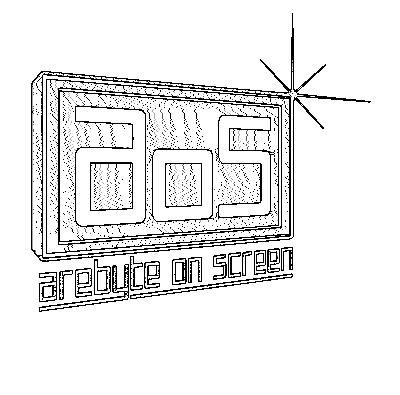# Episode 6
Atmospheric Drafts of Love
Plastic chiral assemblies are shaken stochastically into final form
to simulate bonding activation energy.
Atmospheric shocks unsettle our existence.
Atmospheric shocks form meteoritic fall-in;
lightning, UV radiation nurture our being.
Through solar interactions with the magnetosphere;
the crystallinity of the soft segments in the polyurethanes
causes
Atomic shocks
Atmospheric shocks.
Molecular dissociation energy.
the excess energy is carried away by
the electron.
The energy released is distributed among the vibrational, rotational,
and translational modes.
Into an orbit vibrational ground state.
Our prosthetics mimics a sea horse’s tail.
The metaphor of the undersea world
inspired the design of a body extension for the orbit.
The analysis of the unique seahorse’s tail structure
became the insight into the overall biomimetic design.
In fact, a seahorse tail enables movement,
gripping and protection to the seahorse while floating.
But, seahorses are aleatory beings using tails to grasp objects in their environment
while they camouflage to hide from predators.
Our prosthetics is a network of fabric-covered cables and ball joints
that lock the bodies upper torso to a system of handrails,
while tail sections are inflated and exhausted in sequences to create organic movement.
Floating as a weaponized seahorse.
This is a world of another temporality.
Elastic seahorse tail temporality rubbing against the past
displaying continuity between the past and ongoing injustice
and futurities to be mindful of our grammars, vocabularies,
visions emerging from movements
that are grappling with the ongoing apocalypse of particular bodies.
We argue for an expanded time-frame of the present.
A polymorphic time.
That opens to the duration of the extracorporeal synthetic body postures of millions of years.
Where we glimpse the ephemerality of that bodies
as a micro politics of particular matter.
Interstellar non/human performance tells us that
justice cannot unfold in an ubiquitous web of entanglement;
when everything universally serves one another.
How can aleatory agencies of the present unfold
when the excluded ones are not accounted for;
those relations for which the inclusiveness of planetary entanglement
doesn’t have signals, codes and languages for?
The ultraviolet light of the Sun intensifies matter in particularities.
If we care for each other we act from in-between,
in a world of more than betweens
that installs support systems
that hyperbolically respond,
while providing the conditions to re-entangle
within the particular immersive.
The explosive synthetic wolds of the orbit of the conceive of
the cared-for/caring-bodies,
the cared-for/caring-situations,
the cared-for/caring-void and virtual,
as a complex web of toxic gaseous vibrant matter,
as particular assemblages and textures of poss-ability.
It remains to be seen
how a particular form of polymorphous care,
that intensifies particular relations,
in macromolecular formations,
can un-fold, under-fold, de-fold, re-fold and poly-fold.
As oscillators of sub-sensory experiences
reorganizing present politics as orbitary agency
of queer human and more-than human-ness.
Of synthetic embrace.
Will I remember your embrace?




